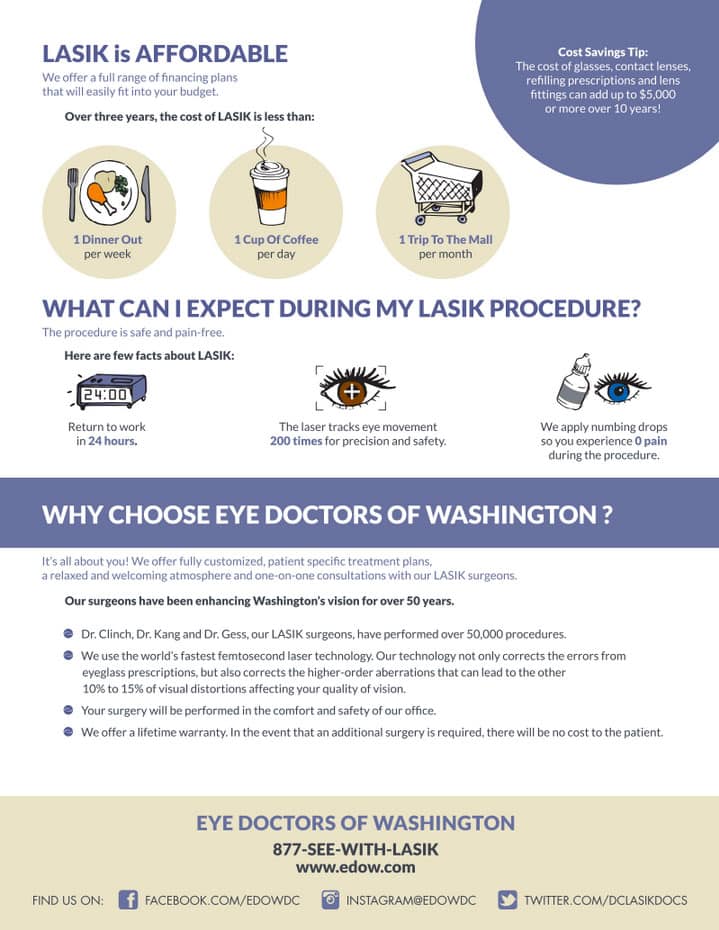This Write-Up Reviews The LASIK Alternatives For Thin Corneas

Created by-Li McCurdy
There are lots of people who have actually been informed they can't get approved for LASIK eye surgical procedure due to poor corneal thickness. Thankfully, there are various other refractive surgery alternatives for them to think about.
These brand-new therapy alternatives are much more effective than LASIK at treating particular types of vision problems and also decreasing the requirement for glasses or calls. They're also more cost effective than LASIK!
1. PRK
LASIK is a prominent laser vision improvement surgical procedure, but not every person is an optimal candidate for it. This is particularly real for those with thin corneas or those that participate in energetic sporting activities or operate in risky work that place them at a higher risk of injury to their eyes.
Thankfully, there are other lasik choices that are effective as well as secure for clients who don't get LASIK. One of these is PRK (photorefractive keratectomy).
Like LASIK, this treatment aims to permanently fix your refractive error. It likewise allows you to minimize or get rid of the requirement for glasses and also calls.
2. ASA
If you're thinking about LASIK however have completely dry eyes or slim corneas, ASA (Advanced Surface Ablation) might be the ideal alternative for you. This laser vision modification strategy reshapes the external layer of your cornea, enabling your specialist to use an excimer laser to correct your eye's refractive error.
ASA is a more advanced variation of PRK, or photorefractive keratectomy, which was the predecessor to LASIK as well as was first authorized by the FDA in 1995. During this procedure, your epithelium is removed, moistened with a diluted alcohol remedy, and also folded back, prior to the excimer laser reshapes the cornea.
ASA has fewer threats than LASIK or PRK, and also it generally takes a much shorter recovery duration. Nonetheless, there are some negative effects that ASA individuals could experience, consisting of post-operative pain and discomfort, undercorrection or overcorrection, and night vision disruptions.
3. Refractive lens exchange
For people who are significantly myopic or farsighted as well as can not go through laser vision improvement treatments like LASIK or PRK, refractive lens exchange is an excellent choice. This procedure is performed by changing your natural lens with an unique intraocular lens (IOL) that fixes your refractive error and also removes the demand for glasses or calls.
If you suffer from presbyopia, an age-related eye condition that creates you to have trouble seeing at close ranges, Refractive lens exchange is the very best choice available to you. This is because LASIK can not effectively fix this eye issue as it works with the cornea.
For http://donny634cruz.booklikes.com/post/5565823/what-are-the-benefits-of-lasik-eye-surgery of people, the aging process triggers the lenses in their eyes to shed versatility and end up being less versatile. This triggers problems focusing on up close objects such as analysis and also dialing phones.
4. Monovision
Monovision is a method of vision correction that uses a contact lens to deal with for both far and wide ranges. It is most commonly used to treat presbyopia, which is an usual eye condition that happens as people age.
It can likewise be an option to LASIK in some clients. With monovision, one eye is remedied for distance vision and the various other is remedied for close-up vision (near vision).
Many people who make use of monovision get in touch with lenses do not need checking out glasses or glasses. Nevertheless, this is not constantly the case.
In a small number of instances, it can be necessary to put on glasses when working with fine information or focusing on close-up items.
Surgical alternatives for monovision consist of laser surgical treatment and also intraocular lens insertion. In EVO ICL Vs Smile , monovision may be attempted with contact lenses to identify if it is appropriate for a person.

